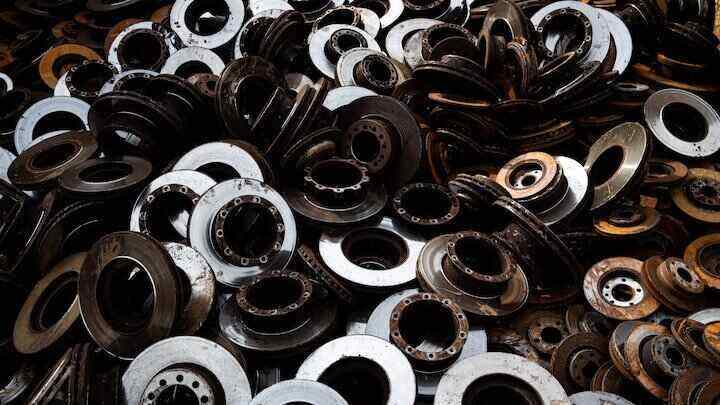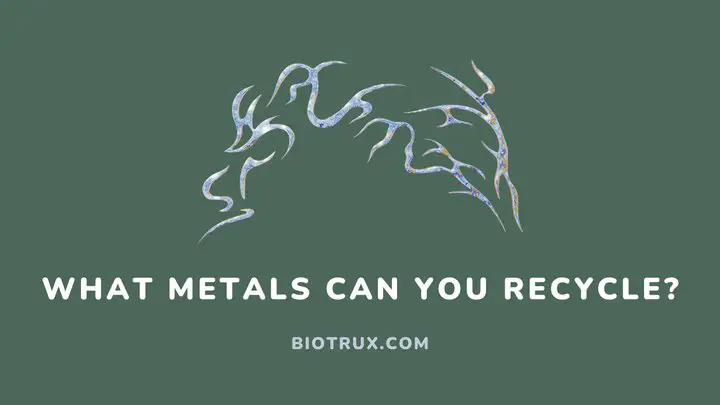Metals exhibit various properties that make them appropriate for an array of applications. While there are a lot of advantages and importance to recycling them, many misconceptions remain about what metals you can recycle.
For example, metals like aluminum and copper are recyclable. On the other hand, metals like pots and computer monitors are not.
Unlike harvesting or mining (which is strictly regulated), recycling metals is more eco-friendly, cheaper, and energy-efficient.
In this guide, you will learn about what metals you can recycle, the importance of recycling, and how it is done.
Why is Metal Recycling Important?
Metals are mined from ores, and the entire process is not environmentally friendly. The process involves mining from ore, separating the metal from its oxide, and grounding and smelting it.
All these stages are energy-sapping, so recycling is a better alternative. In other words, you only need to mine metals when necessary since nearly all of them are recyclable.
Let’s take a look at some of the reasons why metal recycling is essential:
1. Cost and energy-efficient
Recycling metals is cheaper and more energy-efficient than producing new or virgin metals from ores.
The energy requirement for recycling a metal like aluminum is about 5% of the total energy you need to extract and smelt a new one.
2. Continuity
Also, metals rarely degrade without exposure to moisture. Hence, you can recycle them for as long as you want. Metals are worth considering for those looking for a business with less waste output.
3. Affordability
With more businesses and companies focusing on metal recycling rather than mining, the cost of metallic products will be affordable. This benefits the economy.
4. Fewer emissions
When the odds favor metal recycling in an environment or county, you can expect such a location to be healthy. A choice like that means there will be fewer mining emissions or groundwater pollution.
Examples of Metals That are Recyclable

Recyclable metals have three major classifications. They include:
1. Ferrous metals
Ferrous metals contain iron and are magnetic. They are strong and feature heavily in construction companies. Examples of these metals include cast iron, mild steel, wrought iron, and carbon steel.
These metal types are heavily present in cars, railway tracks, shipping containers, and industrial piping.
2. Non-Ferrous Metals
From the name, you should be able to tell that these metals do not contain iron, are not magnetic, and rarely corrode. Examples include aluminum, copper, silver, and titanium.
Because of their malleability, they feature heavily in applications such as roofing, pots, ornaments, taps, wiring, and taps.
3. Alloys
Alloys are a combination of metals designed to exhibit the best properties of each one. A common example is stainless steel — a mixture of steel, nickel, chromium, and magnesium.
They are corrosion-resistant and must be carefully separated into individual metals before recycling starts.
What Metals are Non-Recyclable?
Metals that you can not recycle include used or metals containing dangerous contaminants.
Recycling such metals will end up releasing toxins into the environment. Hence, they must be handled differently or disposed of carefully.
Examples of these metals include:
Motor oil cans
Motor oil cans are not recyclable because of their primary content, motor oil. It would be best to eliminate it at any hazardous waste collection center near you.
Pots and pans
Pots and pans feature coatings that shield food substances from exposure to metal chemicals. An example of this material is Teflon.
Items containing mercury
In the past, items such as light switches, toys, CFL light bulbs, thermostats, and jewelry often contain mercury.
Although newer versions no longer feature mercury, best practices suggest inspecting for mercury before recycling.
Radioactive metals
Radioactive metals like uranium feature in devices like fluorescent lamps, clocks, smoke detectors, and silverware. They should be recycled separately and carefully.
Computer monitors
Computer monitors contain heavy and toxic metals that are not recyclable. Your best bet is to discard them with hazardous waste.
How are Metals Recycled?
Practically, almost every metal is recyclable. When harvesting scrap metals or waste with metals, you must be sure that the material boasts at least 50% metal.
Here is a breakdown of the steps necessary to recycle metals:
1. Collection
First, you need to gather all the materials made of metals together and place them in containers. This helps with transportation to the recycling facility.
2. Sorting
Sorting metal scraps involves separating recyclable metals from non-recyclable ones. It is also important to separate quality metals from inferior ones.
This process helps with generating quality end products at the end of recycling.
3. Processing
At this point, the metal is squeezed with the help of a compactor to ensure they do not occupy too much space in the conveyor belt.
4. Shredding
After compaction, the metals must be broken down into shreds or tiny pieces. This is known as the shredding stage. Shredding allows for further energy-efficient processing.
5. Melting
This is where shredded metal goes into a large furnace. Each metal must enter the appropriate furnace for proper melting. The entire procedure uses a decent amount of energy, but this is nothing compared to the energy required during natural mining.
Melting can take minutes or hours, depending on the furnace’s size, the metal volume, and the temperature.
6. Purification
You can execute purification via electrolysis. This process’s end game ensures that the final product is free of impurities and completely high quality.
7. Solidification
Once purification is complete, the molten metal must arrive at the cooling chamber via the conveyor belt.
This chamber helps solidify the metal before other chemicals, depending on the quality you want the metal to possess.
Once the metal solidifies and is ready for use, it should be transported to construction or manufacturing companies in need of metals.
FAQs
What is the easiest metal to recycle?
Aluminum is the easiest metal to recycle.
This is because you can recycle 95 to 98% of the metal quickly, and it is constantly in circulation.
What is the most profitable metal to recycle?
Copper is the most profitable metal or scrap to recycle.
This is thanks to its high demand and versatility.
Why is recycling copper so difficult?
Recycling copper is a complex process because there are strict requirements to follow to generate pure copper.
Copper used in cables is the hardest to recycle.
Conclusion
Metal recycling is an efficient way to save energy and the environment from toxic exposures. However, not all metals are recyclable.
Metals in their pure form or without contamination are easy to recycle. However, recyclers observe special precautions when they contain contaminants like vehicle oil and other radioactive elements.
I hope you found this guide helpful. Staples in the paper are metal and are also recyclable. If you would like to know how, please see my guide on recycling paper with staples.
Thanks for reading.

